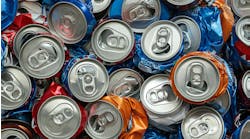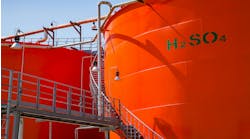A recent troubleshooting case involved a trickle-bed reactor with two major challenges. The first was concern over unwanted catalytic action while the reactor is in standby mode with no liquid flow. The second was the need to process a feed multiple times through the reactor to meet the product specifications.
[pullquote]
The reactor handles a variety of feeds and selectively hydrogenates impurities over a stabilized nickel catalyst. Between campaigns on a specific feed, the reactor might sit idle for weeks or months.
The reaction requires adding hydrogen to liquid feed. The main feed is solid at ambient conditions and, so, needs raising to a somewhat higher temperature to become liquid. If the temperature then drops too low, the feed viscosity could rise high enough for the material to rest in the catalyst structure and not flow.
At temperatures needed to get flow, some catalytic activity is inevitable. In normal operation, this isn’t a problem. The mass flow of the liquid feed suffices to carry away the exothermic heat from the reaction and keep catalyst temperature under control. However, during shutdowns, maintaining a minimum temperature is necessary to prevent the feed from solidifying. This temperature is high enough to guarantee some catalytic activity. Because the flow rate is zero, the exotherm from the heat of reaction could cause hot spots in the bed. This then creates a positive feedback loop: higher temperatures increase the reaction rate, which, in turn, evolves more heat. In fact, some reactors in this service at other plants have experienced incidents where bed temperatures rose well above 1,000°F while in standby mode. Such high temperatures could damage the catalyst. Additionally, if a hot spot formed close to the vessel wall, the vessel could rupture.
To prevent hot spots, we investigated three options: 1) keeping hydrogen flow going; 2) adding a transient catalyst poison to curb catalytic activity; or 3) removing the reactant. While we could maintain the hydrogen flow when there isn’t any fresh liquid feed, the rate available is too low to ensure sufficient cooling. Dosing transient catalyst poisons into the system certainly is doable; however, those materials present their own problems — they are toxic as well as difficult to later remove.
Instead, we opted for a solvent wash at the end of the cycle to dilute and displace the primary feed. The solvent removes the major feed, replacing it with a residual of diluted material that won’t plug the catalyst at low temperatures. This allows standby mode at ambient temperature, easily halting the reaction.
We then turned to the second problem, the need for multiple processing passes to remove contaminants. Some product grades required reprocessing material up to seven times through the reactor to meet specifications. Raising the temperature helped but at some point further temperature increases didn’t seem to improve reactor performance. This puzzled the plant — conventional wisdom was that pushing the temperature even higher would boost catalyst activity and enhance conversion per pass.
Contamination removal requires the presence of both reactants at the catalytic site. The reaction occurs when the liquid containing dissolved hydrogen is in contact with the catalyst. Higher temperatures does increase the reaction rate at the reactor surface.
However, the plant had missed a fundamental aspect of how the system works: higher temperatures reduce the solubility of hydrogen in the main feed. Here, raising the temperature above a certain point lowers the conversion in the reactor. The limiting factor becomes the hydrogen available, not the reaction rate. The reaction goes to completion until all the hydrogen dissolved in the hydrocarbon is consumed. Increasing reaction rate without providing more hydrogen is pointless.
So, the solution was to work on hydrogen availability as well. This required raising system pressure so a greater amount of hydrogen is dissolved in the main feed. Fortunately, accomplishing this only involved relatively modest changes to the hydrogen compressors.
After boosting the pressure, reactor conversion rose rapidly; fewer passes were needed to reach product quality. This significantly reduced operating costs and improved plant economics.
When troubleshooting reactor systems, keep track of system properties to understand the interplay of availability, reaction pathways and catalytic effects.



